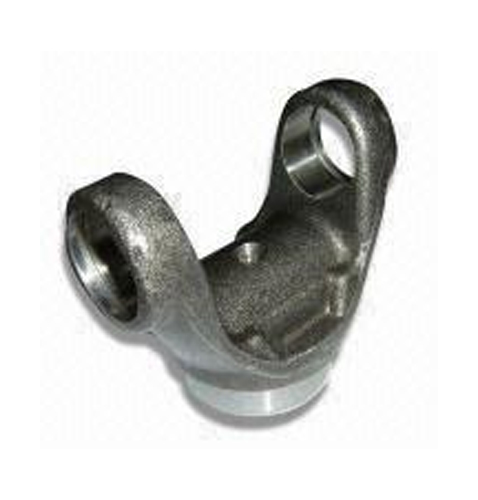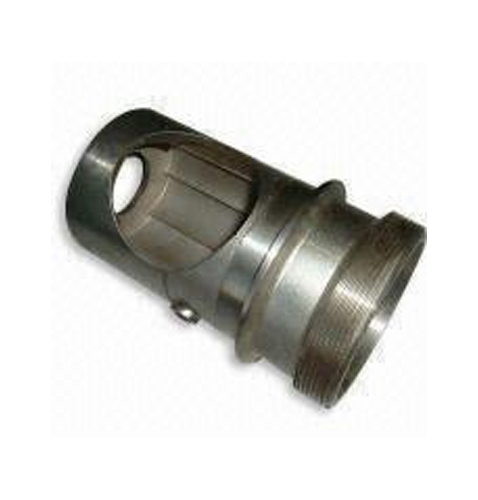Technical supportHOME > Technical support > Technical support
Surface treatment process
Surface treatment is a process method of artificially forming a surface layer with different mechanical, physical and chemical properties from the substrate. The purpose of surface treatment is to meet the requirements of corrosion resistance, wear resistance, decoration or other special functions of products. For metal castings, our common surface treatment methods are mechanical grinding, chemical treatment, surface heat treatment and spraying surface. Surface treatment is to clean, deburr, degrease and scale the workpiece surface.
The surface treatment process can be divided into four aspects:
1. Mechanical surface treatment: sand blasting, shot blasting, grinding, rolling, polishing, brushing, spraying, painting, oil painting.
2. Chemical surface treatment: bluing and blackening, phosphating, pickling, electroless plating of various metals and alloys, TD treatment, QPQ treatment, chemical oxidation.
3. Electrochemical surface treatment: anodizing, electrochemical polishing, electroplating
4. Modern surface treatment: chemical vapor deposition CVD, physical vapor deposition PVD, ion implantation, ion plating, laser surface treatment
Spraying
Spraying is the most common surface treatment, suitable for both plastic and hardware. Spraying generally includes fuel injection, powder spraying etc., and the most common is fuel injection. The sprayed coating is commonly known as paint, which is composed of resin, pigment, solvent and other additives. Plastic spraying generally has two coats of paint. The color on the surface is called topcoat, and the most transparent layer on the surface is called protective paint.
Introduction to spraying process flowing:
(1) Early cleaning. Such as electrostatic precipitator.
(2) Paint topcoat. The topcoat is generally the color visible on the surface.
(3) Dry the finish paint. It is divided into room temperature natural drying and special oven drying.
(4) Cool the finish paint. Special oven drying requires cooling.
(5) Spray protective paint. Protective paint is generally used to protect the top coat, most of which are transparent paint.
(6) Curing protective paint.
(7) QC inspection to check whether the requirements are met.
3. Rubber oil
Rubber oil, also known as elastic paint, touch paint. Rubber oil is a two-component high elastic touch paint. The product sprayed with the paint has special soft touch and high elastic surface touch. The defect of rubber oil is high cost, general durability and easy to fall off after a long time. Rubber oil is widely used in communication products, audio-visual products, MP3, mobile phone shell, decorations, leisure and entertainment products, game console handles, beauty equipment, etc.
4. UV paint
UV paint is the abbreviation of Ultra Violet ray. The commonly used UV wavelength range is 200-450 nm. UV paint can only be cured under ultraviolet light.
UV paint features: transparent and bright, high hardness, fast fixing speed, high production efficiency, protection of finish paint, hardening and brightening surface.
Water plating
Water plating is an electrochemical process. It is generally understood that the surface processing method is to immerse the product parts to be electroplated in the electrolyte, then apply an electric current to deposit the metal on the surface of the parts by electrolysis to form a uniform, dense and good bonding metal layer.
Suitable materials for water plating: the most common is ABS, preferably electroplating grade ABS other common plastics such as PP, PC and PE are difficult to water plating.
Common surface colors:
Gold, silver, black, orange.
Common plating effects:
Highlights, Low Gloss, Fog surface, Blends and so on.
Vacuum plating
Vacuum plating is a kind of electroplating. In high vacuum equipment, a thin metal coating is plated on the product surface.
Technological process:
Surface cleaning --- electrostatic removal --- primer spraying --- primer baking --- vacuum coating --- topcoat spraying --- topcoat baking --- quality inspection --- packaging
Advantages and disadvantages of vacuum plating relative to water plating:
The advantages as follows:
1. There are many electroplating plastic materials.
2. It can be used for color plating with rich colors.
3. The plastic properties will not be changed during electroplating, and local electroplating is convenient.
4. No waste liquid, environmental protection.
5. Be able to do non-conductive vacuum plating.
6. The electroplating effect is brighter than water plating.
7. Higher productivity than water plating.
The disadvantages are as follows:
1. The defect rate is higher than that of water plating
2. The price is higher than that of water plating
3. The surface of vacuum coating is not wear-resistant and needs UV protection. Water plating generally does not go through UV protection




